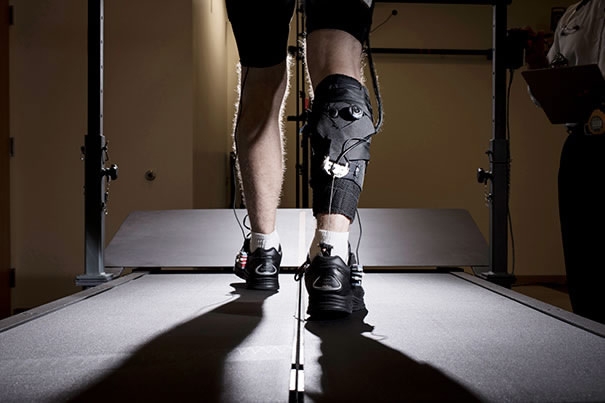
Tech & Sci
22:31, 30-Jul-2017
New soft robotic suit helps stroke patients walk normally

Among patients who have had a stroke, about 80 percent suffer from hemiparesis, which means one limb doesn't function normally. The inability may change their lifestyle and therefore cause secondary health problems.
To help these patients, American robotic groups and academia have developed wearable devices known as exoskeletons. Though they help stroke patients in walking, these devices are heavy and expensive, and they do little to help patients regain the ability to walk on their own.

The soft ankle-assisting exosuit can be worn as a piece of clothing. /Photo via Harvard Gazette
The soft ankle-assisting exosuit can be worn as a piece of clothing. /Photo via Harvard Gazette
“Current approaches to rehabilitation fall short and do not restore the mobility that is required for normal life,” said Terry Ellis, director of the Center for Neurorehabilitation at Sargent College and an assistant professor at Boston University.
Different from previous models, the soft ankle-assisting exosuit developed by researchers from Harvard University and Boston University can be worn as a piece of clothing. Also, tests show its benefit of being able to correct the wrong walking strategies patients form after experiencing a stroke.

This view of the exosuit shows its soft robotic elements and the cable that transfers mechanical power from actuators operated in the hip to the ankle joint. /Photo via Harvard Gazette
This view of the exosuit shows its soft robotic elements and the cable that transfers mechanical power from actuators operated in the hip to the ankle joint. /Photo via Harvard Gazette
Xinhua reported that nine patients aged 30 to 67 have tested the device. Results found that they were able to walk in a more stable manner and that their movements were more symmetrical and natural.
“In an ideal future, patients post-stroke would be wearing flexible adjusting exosuits from the get-go to prevent them from developing inefficient gait behaviors in the first place,” said Ellis.
(CGTN intern Zhou Jingwen contributed to this story)

SITEMAP
Copyright © 2018 CGTN. Beijing ICP prepared NO.16065310-3
Copyright © 2018 CGTN. Beijing ICP prepared NO.16065310-3